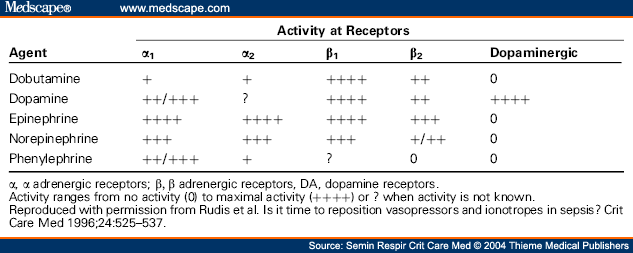As mentioned in my previous blog post sepsis is a huge problem in the hospital setting in the world, costing countries billions of dollars a year in health care costs. In order to combat this problem, countries from around the world came together in the fall of 2002 and launched the Surviving Sepsis Campaign. In this post we will continue with the Hemodynamic Support and Adjunctive Therapy aspects of the Surviving Sepsis Campaign.
The following are Recommendations for Hemodynamic Support and Adjunctive Therapy:
- Fluid Therapy of Severe Sepsis
- Crystalloids as the initial fluid of choice in the resuscitation of severe sepsis and septic shock
- Against the use of hydroxyethyl starches for fluid resuscitation of severe sepsis and septic shock
- Albumin in the fluid resuscitation of severe sepsis and septic shock when patients require substantial amounts of crystalloids
- Initial fluid challenge in patients with sepsis-induced tissue hypoperfusion with suspicion of
- hypovolemia to achieve a minimum of 30 mL/kg of crystalloids (a portion of this may be albumin
- equivalent). More rapid administration and greater amounts of fluid may be needed in some patients
- Fluid challenge technique be applied wherein fluid administration is continued as long as there is hemodynamic improvement either based on dynamic (eg, change in pulse pressure, stroke volume variation) or static (eg, arterial pressure, heart rate) variables
- Vasopressors
- Initially target a mean arterial pressure (MAP) of 65
- Norepinephrine is the first vasopressor of choice
- Epinephrine would be the next vasopressor in line to use.
- Vasopressin 0.03 units/minute can be added to norepinephrine (NE) with intent of either raising MAP or decreasing norepinephrine dosage
- Low dose vasopressin is not recommended as the single initial vasopressor for treatment of
- sepsis-induced hypotension and vasopressin doses higher than 0.03-0.04 units/minute should be reserved for salvage therapy (failure to achieve adequate MAP with other vasopressor agents)
- Dopamine should only be used as an alternative to norepinephrine in a select group of patients (patients that have a low risk of tachy arrhythmias or patients with bradycardia)
- Phenylephrine should only be used when norepinephrine causes significant arrhythmias; when cardiac output is high and blood pressure is persistently low; and as salvage therapy
- Renal dose dopamine should not be used
- All patients requiring vasopressors should have an arterial catheter as soon as possible if the resources are available
- Inotropic Therapy
- A trial of dobutamine infusion up to 20 micrograms/kg/min be administered or added to vasopressor (if in use) in the presence of (a) myocardial dysfunction as suggested by elevated cardiac filling pressures and low cardiac output, or (b) ongoing signs of hypoperfusion, despite achieving adequate intravascular volume and adequate MAP
- Should not attempt to increase cardiac index to a predetermined supranormal level
- Corticosteroids
- Do not use corticosteroids if fluid resuscitation and vasopressors achieve hemodynamic stability. If hemodynamic stability is not achieved then administer intravenous hydrocortisone alone at a dose of 200 mg per day
- Do not use the ACTH stimulation test to identify patients in septic shock that should receive corticosteroids
- When using corticosteroids on patients, taper them when the vasopressors are no longer needed
- Corticosteroids should not be administered for the treatment of sepsis without the presence of shock
- Hydrocortisone should be given IVPB and not IVP (Recommendations: Hemodynamic Support and Adjunctive Therapy, 2012)
Works Cited
Recommendations: Hemodynamic Support and Adjunctive Therapy. (2012). Retrieved August 1, 2013, from Surviving Sepsis Campaign: http://www.survivingsepsis.org/Guidelines/Documents/Hemodynamic%20Support%20Table.pdf

Leave a Comment